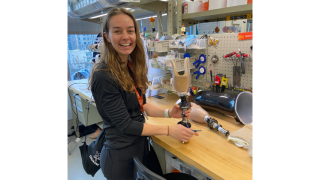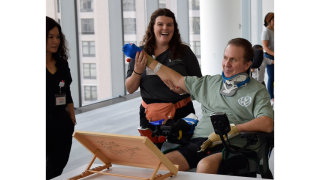Body
Locked–in syndrome is a condition in which all voluntary muscles of the body are paralyzed, except for those that control eye movements. It can result from a stroke or other conditions. When due to a stroke, it is generally because the brainstem has been injured. The brainstem is part of the pathway that carries messages from the brain to the muscles and nervous system.
When locked-in syndrome is caused by a stroke, people can sometimes recover movement and ability. Because of the paralysis, however, it is common to have problems with breathing, coughing and swallowing. Some people will need a tube in the neck to help with breathing (tracheostomy). Others may need a tube for feeding or urination. These may be necessary only until function returns.
People with locked-in syndrome are alert and able to think even though they cannot move. Communication is possible by blinking the eyes – for example blinking once means “no” and gazing up means “yes.”
The goals of rehabilitation for locked-in syndrome are:
- Ability to sit and stand with assistance including ability to hold head up
- Use of a power chair initially with potential goals of walking with a device
- Improved communication with voice or technology
- Ability to swallow some or all food consistencies
- Simplification of medical care including removal of medical tubes.
Research has shown that people with locked-in syndrome who are part of rehabilitation programs report a good quality of life, even if they do not return to “normal.” This is especially true if the individual can return home, move about in the community and join in family activities.
The Shirley Ryan AbilityLab has a dedicated team that understands the challenges faced by people with locked-in syndrome and their families. Expert medical care, exercise therapy, customized equipment and the latest technology are all used to help achieve the best possible recovery and function.
Body
This content is for informational purposes only and may not be comprehensive. Information contained does not imply an endorsement from Shirley Ryan AbilityLab, and does not replace the advice of a qualified healthcare professional. See here for further details. © Shirley Ryan AbilityLab (formerly Rehabilitation Institute of Chicago). Henry B. Betts LIFE Center – (312) 238-5433 – https://www.sralab.org/lifecenter.



